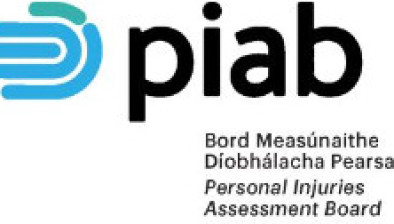High Court: Application to dismiss personal injuries case refused despite certain misleading evidence

The High Court has refused an application by a defendant in a personal injuries action to dismiss the plaintiff’s case pursuant to section 26 of the Civil Liability and Courts Act 2004. It was alleged that the plaintiff gave false or materially misleading evidence to the court in relation to back injuries suffered in a road traffic collision.

About this case:
- Citation:[2022] IEHC 351
- Judgment:
- Court:High Court
- Judge:Mr Justice Mark Sanfey
Delivering judgment in the case, Mr Justice Mark Sanfey determined that a portion of the plaintiff’s evidence was “perhaps misleading”, while certain averments in an affidavit of verification were “misleading in a material respect”.
However, the court held that the plaintiff was a credible witness who did not know that his evidence was misleading when it was provided to the court and refused the application. The plaintiff was duly awarded €62,500 for his injuries.
Background
In February 2017, the plaintiff was stationary in his car and was struck from behind by the defendant’s car. The plaintiff was 40 at the time of the accident and was an avid sports player and coach. He played hurling and football to a high level until 38, ran marathons and was a keen cyclist. He also coached the senior hurling team Buffers Alley.
The plaintiff had received numerous minor injuries throughout the years and generally tried to shrug off injuries. After the accident, the plaintiff’s boss provided a van for him to drive home. On the way, the plaintiff attended Caredoc, an out of hours clinic. The Caredoc attendance records indicated that the plaintiff had “neck pain and a bit of a headache at the back… he does not feel pain anywhere else at the moment”.
The plaintiff tried to get back to normal life and persisted with assistance from physiotherapists at his clubs for several months. However, he experienced spasms in his lower back in March 2018 which caused severe discomfort. He was given an injection of Difene but was hospitalised after an anaphylactic reaction.
The plaintiff issued proceedings in March 2020, claiming that he suffered from intermittent and severe low back pain. He also claimed to have considerable problems with his neck and shoulder. At trial, the plaintiff claiming to be “very happy” since he had started receiving regular injections to manage his neck pain, although he was not able to return to coaching or engage in cycling/running to pre-accident levels.
The defendant admitted liability in the case and the matter proceeded as an assessment of the plaintiff’s injuries. A major issue arose in the evidence, where the plaintiff had previously attended his GP in February 2016 with “a muscular back complaint but also pain in scrotum”. The plaintiff was referred for an MRI scan which revealed degenerative disc disease.
The defendant also pointed out that the Caredoc records did not state that the plaintiff was suffering from back injury on presentation following the accident. The defendant argued that this was in conflict with the indorsement of claim on the personal injuries summons, which stated that he sustained injuries to his “neck, back and shoulder”. Further, the indorsement stated: “He was found to have significant spasm in muscles of the cervical area and lower lumbar spine.”
In response to the 2016 attendance with his GP, the plaintiff claimed that he had attended due to pain in his scrotum. The GP stated that he recorded the issue as a potential lumbar impingement on the nerves to the testicular sac. As such, it was claimed that the MRI investigation was for the scrotal issue.
Further, the plaintiff accepted that he did not tell Caredoc that he was suffering from back pain. However, the plaintiff had told PIAB’s orthopaedic consultant in March 2019 that he had told Caredoc about the pain.
At the conclusion of the plaintiff’s evidence, the defendant made an application pursuant to section 26 of the Civil Liability and Courts Act 2004 to dismiss the case for providing false or misleading evidence. It was squarely stated that the plaintiff had lied to the orthopaedic consultant about his symptoms and failed to disclose the 2016 MRI scan.
High Court
Mr Justice Sanfey began by outlining the general principles applicable to section 26 applications. The court noted a defendant must establish the plaintiff’s intention to mislead a court and that the plaintiff adduced evidence which was misleading in a material respect (Nolan v. O’Neill [2016] IECA 298).
Further, even if a court was satisfied that false and/or misleading evidence was knowingly adduced, the court must consider whether dismissal would result in an injustice (Platt v. OBH Luxury Accommodation Limited [2017] 2 IR 382). Finally, it was held that section 26 applications were to deter fraudulent claims and were not designed to allow a forensic assault on a plaintiff’s evidence (Smith v. Health Service Executive [2013] IEHC 360).
Dealing first with the plaintiff’s credibility, the court held that the test for “knowingly” misleading a court was subjective. Having observed the plaintiff and the “bruising cross-examination” closely, the court was satisfied that he was an “honest and credible witness who gave answers truthfully and to the best of his recollection.” It was to his credit that he accepted the inconsistencies in the Caredoc records rather than contest them, as it showed he did not fashion his answers to suit his case.
It was accepted by the plaintiff that the indorsement of claim was incorrect insofar as it stated that he told Caredoc about his back pain. His evidence was that he did not recall what he said to the Caredoc clinician, but it was not unreasonable to assume that the back pain was mentioned since he suffered such pain a day later.
Accordingly, the court held that the averments in the affidavit were not false, but were misleading in a material respect. However, the court was not satisfied that the plaintiff knew that his affidavit was misleading when it was sworn.
The court then considered the issue of the pre-existing degenerative disease in the back. The court considered the plaintiff’s replies to particulars on the issue to be “entirely inadequate” and misleading. While the 2016 MRI scan should have been disclosed to the defendant much earlier than it was, the court accepted the plaintiff’s evidence that he considered the 2016 visit to be solely for his scrotal pain. As such, it was accepted that the plaintiff did not appreciate the possible significance of the 2016 scan to his 2019 accident.
Accordingly, the plaintiff’s position that he had no history of back complaints was “perhaps misleading”, but the court was not satisfied that the plaintiff knew it to be misleading.
Since the defendant did not go into evidence, the court proceeded to assess the plaintiff’s injuries. The court considered the medical reports of the orthopaedic consultant and held that the conclusions were valuable despite the consultant not being told about the 2016 scan or the non-disclosure of pain to Caredoc.
The court noted that the consultant stated that degenerative changes to the back usually became symptomatic when there was a “provoking factor”. The court held that the plaintiff had suffered significant symptoms in his back, and also his neck and shoulder.
The court awarded €35,000 in general damages for the neck injury and €32,500 for the back injury. The court applied a smaller discount to the overall award since the two injuries presented differently and required different treatments. The overall award was therefore set at €62,500.
Finally, the court decline to award any aggravated damages from the failed section 26 application. Although the application was unsuccessful, the cross-examination was within acceptable limits and the application was not improperly made.
Conclusion
The court rejected the section 26 application and assessed the plaintiff’s general damages at €62,500.
Foxe v. Codd [2022] IEHC 351










